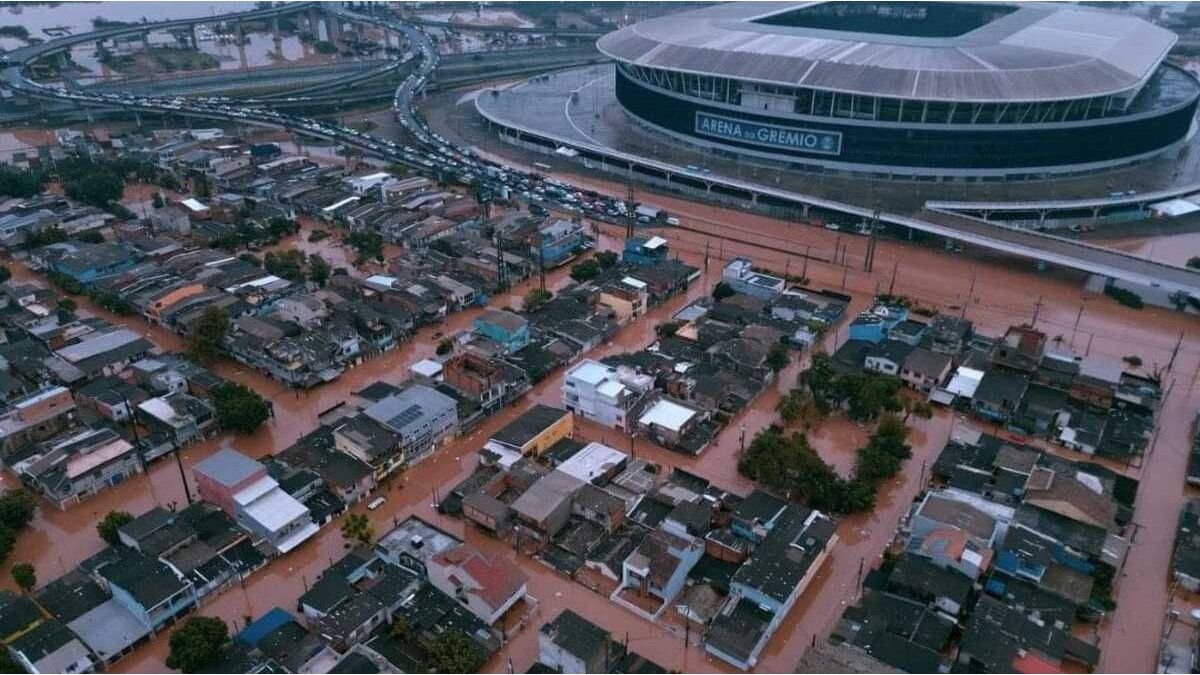The death toll from heavy rains in the Brazilian state of Rio Grande do Sul has increased to 136, as reported on Saturday by the local civil defense, compared to 126 the previous day.
In addition, another 125 people remain missing, the official report indicates.
The storms and floods that hit the southernmost state of the South American country, where some 10.9 million people live, have also left almost 340,000 displaced, according to the local civil defense.
Climate change denial theories proliferate amid disaster in Brazil
The climate catastrophe that hits southern Brazil has increased the spread of conspiracy theories, such as in videos of antennas and airplane trails that have gone viral on social networks. “What is happening in Rio Grande do Sul is definitely not natural. Let’s open our eyes!”says an X user.
According to her, the floods that killed at least 136 people and affected almost two million are the result of an attack by “HAARP”, a project that studies the layers of the ionosphere using antennas located in Alaska, United States.
Other network users publish images of planes crossing the sky of Rio Grande do Sul (south), whose traces they consider to be the real reason for the devastating rains.
The contents converge on a conspiracy theory that denies climate change and, at the same time, blames governments and scientific institutions for supposedly orchestrating “planned tragedies.”
The publications, which total hundreds of thousands of interactions on social networks, ignore the scientific consensus on the causes of the catastrophe and its strong connection with global warming.
The rains do not stop
temporary brazil 2.jpg
Courtesy X @noticiero9ok.
The rains returned to Rio Grande do Sulwhere the death toll from historic flooding in Brazil’s southernmost state totaled 136, in addition to 125 people still missing, local authorities said.
The heavy rains, linked to this year’s strong El Niño current, which encountered other weather fronts, caused several rivers and lakes in the region to reach their highest levels and overflow.
The floods inundated the center of Porto Alegre, the state capital, and turned the streets of peripheral cities into rivers, displacing more than 340,000 people from their homes.
The rain began again after a day-long pause that allowed the level of Porto Alegre’s Guaiba River to fall below a record 5 meters. Meteorology group Met Sul said rain should persist until Monday, with a “high risk of storms” over the weekend.
The volume of rain exceeded 400 millimeters in the first five days of May in Rio Grande do Sul, much more than the average of between 140 and 180 millimeters for the entire month, reported the National Meteorological Institute.
In Canoas, one of the most affected cities near Porto Alegre, more than 6,000 people were staying in a university gymnasium converted into a shelter. She appeared to Fátima Fagundes and said that she had a hard time sleeping there because she couldn’t stop thinking about “the worst day” of her life.
“I keep remembering people saying ‘help’, ‘help'”, said. “It was horrible”.
The state government said more than 385,000 people did not have water and about 20 cities were without telecommunications services.
Source: Ambito




